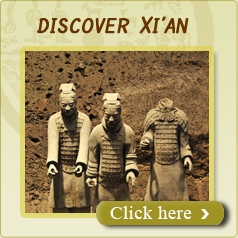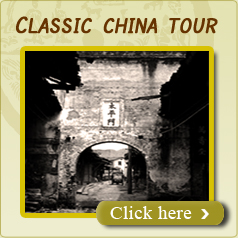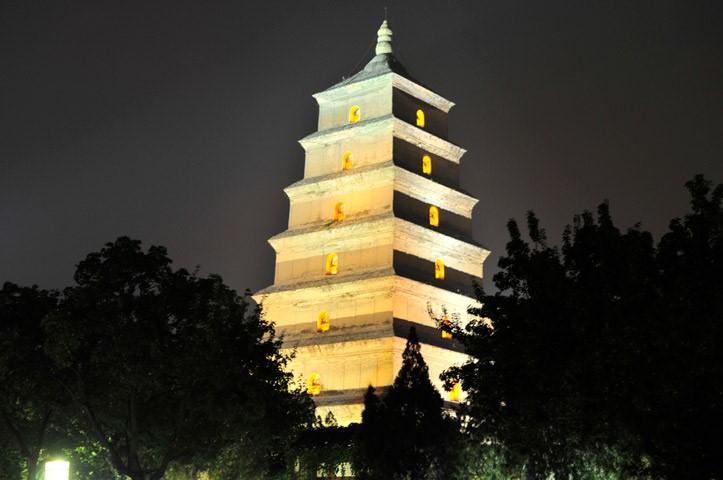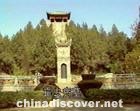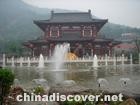Terra Cotta Warriors

Overview
The Terra Cotta Warriors is only a part of the Qin emperor's tomb complex. They may have remained forgotten had it not been for the fortuitous discovery by local peasants drilling a well in 1974. What they found would excite the archeology world.
Though excavations have been slowly uncovering the area over the last 30 years, but the underground palace, the central part of the mausoleum remains a mystery. Archaeologists predict that might take 200 years to unearth it all, and no one is quite sure what they'll find-the artisans and craftsmen who built it were rumored to have been entombed inside to ensure they never revealed the emperor's secrets.
In a vault of approximately 12,000m2 and 5m underground lay some 8,000 terracotta infantry soldiers ,archers, cavalrymen and chariots arranged in battle formation, ready to defend their emperor's immortal soul. Each soldier is approximately 1.8m-tall, with higher-ranking soldier being taller, and made of 7.6cm thick terracotta clay. Each part of the hollow body was made separately, while the trunk, limbs and hands were mass-produced, the heads were individually constructed and the fce of each warrior is distinct. The terracotta sculptures show a high level of artistry with individualized facial expressions, hairstyles and clothing and were once brightly painted with black armor, colorful red scarves and green pants, though the colors have long faded. As warriors, they each held weapon, bronze swords, spears, axes and halberds-which were still sharp when discovered, and longbows and crossbows.
know more
In 221 B.C, for the first time in its history, China was united under one emperor, Qin Shihuang of the Qin dynasty. The Qin emperor's influence far out lived his short dynasty. His most important achievement was unifying the various warring kingdoms and integrating writing, money, weights and measures into one centralized and standardized bureaucracy. Like many autocrats, Qin Shihuang had an early start on his own mausoleum; construction began when he was only 14 and continued for 36 years.
The emperor's tomb complex is masive memorial to a man that his tory remembers as both brilliant and brutal. Many parts of hsi rich tomb remain unexplored because current archeological technology isn't advanced enough to preserve the priceless artifacts held within.
The tomb of the Qin emperor, at 56.25km2, is best described as an underground palace with stables and an inner and outer city. Han dynasty historian Sima Qian detailed the construction effort, he wrote of the vast dffort required to build the emperor's final resting place. Over 700,000 conscript and slave laborers built the tomb to hold the numerous treasures within, rivers of mercury, constellations of pearls and gems embedded into the ceiling, plus an assortment of valuables the emperor would require in his afterlife, including live soldiers, concubines and servants-plus the artisans who worked on the mausoleum lest they reveal its secrets.
Today Qin Shihuang's unopened vault, 1.5km from the Terracotta Warriors and 30km from Xi'an, still grards its secrets. The non-descript grassy tumulus is surrounded by trees. On peaceful sunny days, the wind blows yellow earth across the countryside, what may lie underneath belies the humble surroundings and tantalizes the imagination.
Must see
Three pits containing warriors are open, a nearby fourth pit was fund empty. The pits zre still being excavated and in many; warriors lay toppled as if they fell in combat. Shattered and headless statures give the errie sense of viewing the carnage of an ancient battlefield. Though a daunting task, archeologists continue to piece together the broken remains of those warriors who lost their battle against time.
Pit is the largest and contains about 6,000 warriors with war chariots and horses. Housed in a gigantic building that resembles an airplaned hangar, the warriors are protected from the elements and tourists who view them from elevated walkways. The warriors are lined in 38 trenches, facing eastwards to the emperor's tomb.
The warriors in Pit 2 are mostly hidden excavation continues with most of the area closed off. This pit show signs of fire damage, the wooden roof structure was burned when the mausoleum looted by Xiang Yu, one of the warlords who battled for supremacy after the fall of the Qin dynasty. While the first pit is the mobile arm of the army with chariots, cavalry and archers. A tall statue, thought to be a general, was also found in his pit.
The third pit is the command center for the ghostly army, with 68 statues of officers around a warcharior. The clothing of the officers differ from common soldiers, the officers wear fine robes and are much taller.
There is a display hall with two bronze chariots unearthed near the base of the emperor's tomb. These elaborate half-sized chariots are intricately detailed with detailed drivers and horses that have decorated plumes and gold and silver inlaid harnesses. These richly decorated chariots feature working parts such as windows that open and close and turning handles. There are also exhibitions featuring artifacts from the pits, allowing a closer look at the intricate workmanship.
Outside the gates of the Terracotta Warriors, present day market warriors will give a shrill battle cry as you approach. They're armed with different wares, from ubiquitous replica terracotta warriors to postcards-the best defense is a good offense and that means bargaining.

